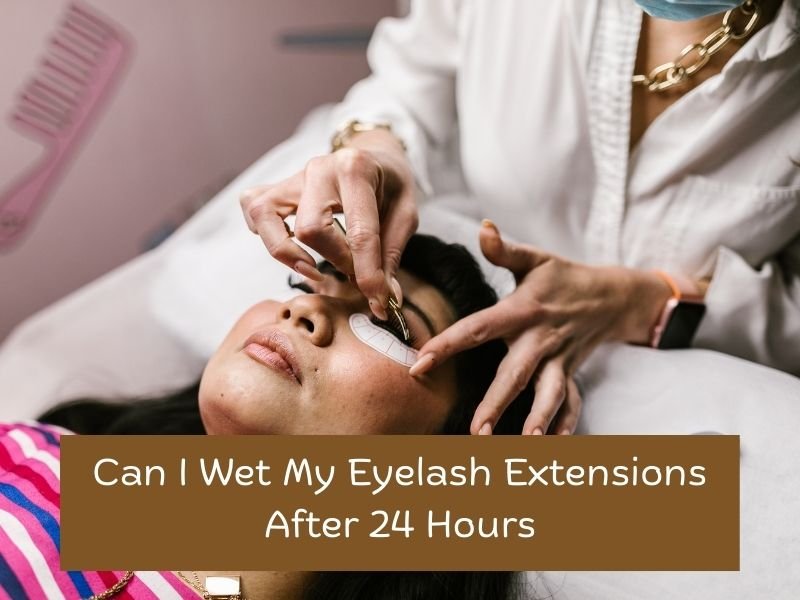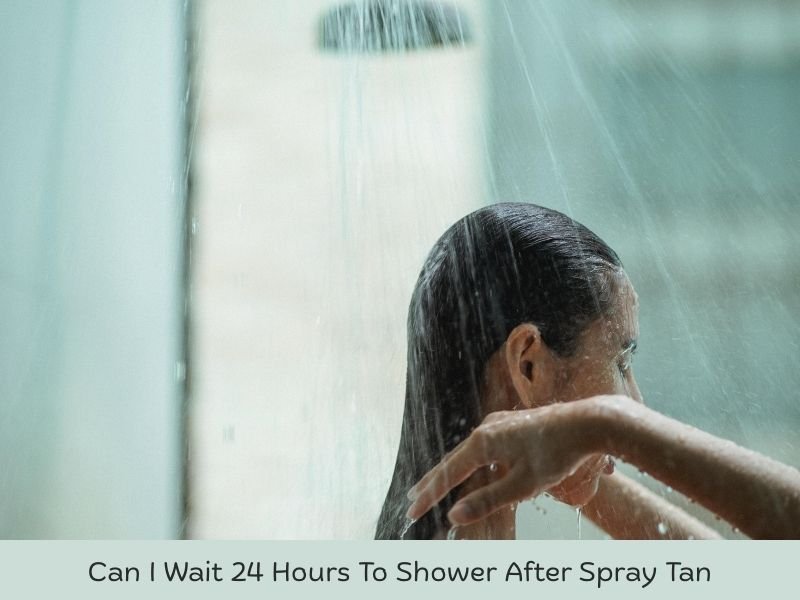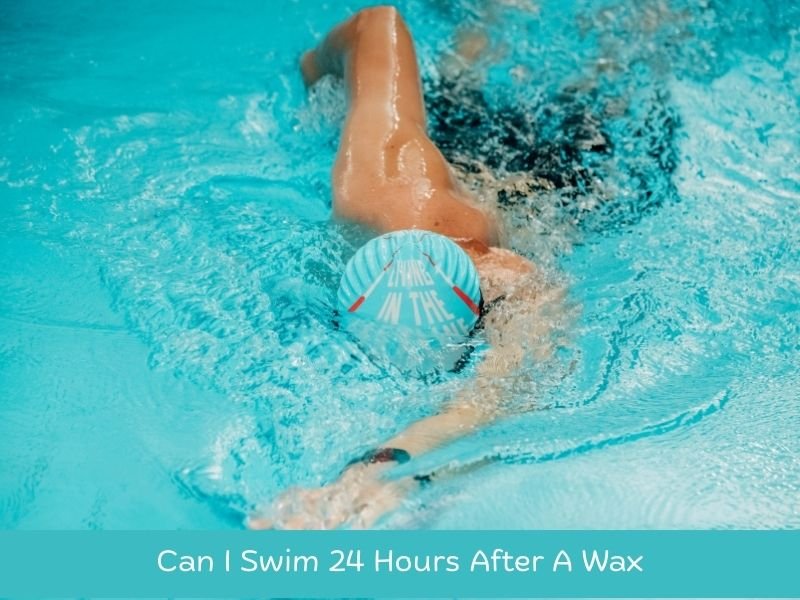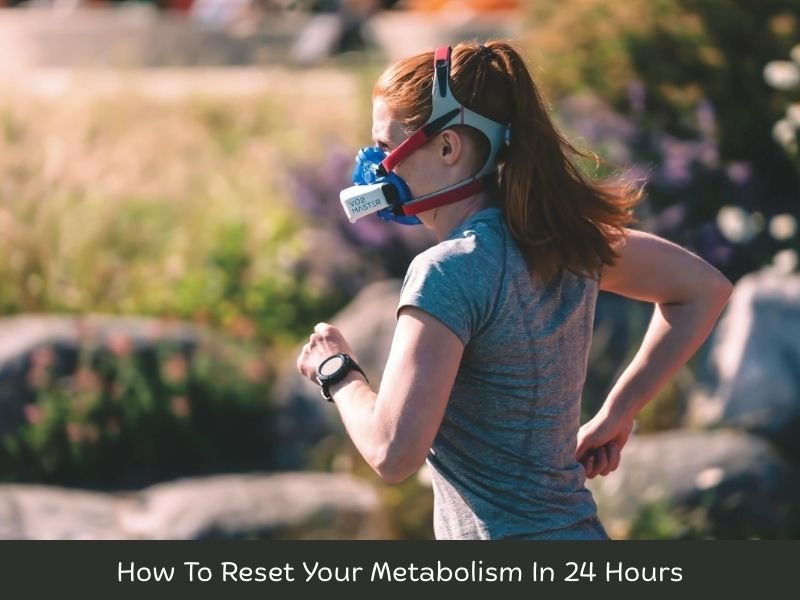So, you’ve taken the plunge into the fluttery, fabulous world of eyelash extensions. You leave the salon feeling like you could star in a shampoo commercial with one wink — until your lash tech warns you, with the seriousness of someone giving nuclear launch codes: “Do not get them wet for 24 hours.” Suddenly, you’re rethinking your entire hygiene schedule. Showers become strategic missions, your nightly skincare routine gets downgraded to a vague suggestion, and you start blinking suspiciously at humidity like it’s out to sabotage your lash game.
But after 24 hours, the question emerges like a soggy sponge in the back of your mind: “Can I wet them now?” It’s a simple question, but one that comes with layers of science, lash tech opinions, and urban myths passed around beauty salons like secret recipes. If you’re ready to separate fact from fiction and stop tiptoeing around water like you’re made of sugar, you’re in the right place. Let’s dive in — metaphorically at first — to the wet-and-wild world of eyelash extension aftercare.
Understanding Eyelash Extension Adhesive
Before you give your lashes their long-awaited reunion with water, it helps to understand what’s holding those luscious extensions in place. The glue used for eyelash extensions is no ordinary adhesive; it’s a fast-drying, cyanoacrylate-based formula — the same basic ingredient found in superglue. Sounds intense? That’s because it is. This glue is engineered to bond lash extensions to your natural lashes, holding up through sweat, tears, and the occasional ugly cry.
But even with all its strength, this adhesive needs time to fully cure. Curing is the chemical process where the glue hardens and sets completely. While it may feel dry to the touch within seconds, it actually continues to bond and strengthen for several hours afterward. That’s why most lash technicians recommend waiting a full 24 hours — and in some cases, up to 48 hours — before letting water anywhere near your lashes. It’s like baking a cake: it might look done on the outside, but cut into it too soon and you’re left with a gooey mess.
Can You Wet Eyelash Extensions After 24 Hours?
Now that we understand the science behind the glue, let’s get to the burning question: can you wet your eyelash extensions after 24 hours? The answer, in most cases, is yes — with some caveats.
Many lash technicians agree that by the 24-hour mark, the adhesive has cured enough to handle exposure to water. Thanks to advancements in lash glue formulas, some modern adhesives cure faster and are even labeled as water-resistant within just a few hours. However, this doesn’t mean you should go diving into a chlorinated pool or stand under a high-pressure shower head like you’re in a shampoo ad just yet.
Several variables affect whether your lashes are truly ready for water. First and foremost: what kind of glue did your lash technician use? Some salons use fast-curing adhesives that allow water contact after as little as four hours, while others prefer traditional formulas that need the full 24–48 hours to reach peak strength. If your lash artist didn’t specify, don’t be afraid to ask — they’re the best source of guidance for your particular set.
Other factors include your local climate and humidity levels. If you live somewhere with high humidity, the glue may cure faster. Conversely, in dry environments, curing can take a little longer. And of course, always follow the specific aftercare instructions provided by your lash technician. They know their products, your lash type, and the ideal regimen for success.
What Happens If You Wet Them Too Soon?
Let’s say you jumped the gun and got your lashes wet at the 12-hour mark — what’s the worst that could happen? Unfortunately, it’s not great. Water exposure during the curing window can interfere with the bonding process, weakening the adhesive before it has a chance to fully set. This can cause extensions to shed prematurely, which is the opposite of the “longer, fuller lashes” dream you signed up for.
You might also notice clumping or a white, powdery residue on the lashes — a phenomenon known as “shock polymerisation.” This happens when moisture forces the adhesive to cure too quickly, creating a brittle bond that doesn’t last. In other words, instead of secure, natural-looking lashes, you end up with a flaky mess and a disappointed mirror stare.
If you’ve accidentally exposed your lashes to water too soon, it’s not the end of the world, but you might need a touch-up sooner than expected. Some people may experience irritation if the glue hasn’t set properly, especially if it gets into the eye. If anything feels off — burning, itching, or unusual shedding — check in with your lash tech.
Safe Ways to Wet Your Lashes After 24 Hours
Once you hit the safe zone after 24 hours (or whatever timeline your lash artist suggests), you can begin reintroducing water — carefully. The first rule? Be gentle. Think of your lashes like a silk blouse: beautiful, delicate, and definitely not made for rough scrubbing.
Start with a lash-safe cleanser. These are oil-free, gentle foaming products designed specifically for eyelash extensions. Apply the cleanser using a soft brush or your fingertips, and work it through your lashes in downward strokes. Avoid rubbing side to side, which can tangle or dislodge the extensions.
When rinsing, use lukewarm water — not hot — and avoid strong water pressure directly on your face. Tilt your head back slightly and let the water run down gently over your eyes. Afterwards, pat your lashes dry with a clean towel or let them air-dry. Resist the urge to rub or blot roughly, which can loosen the extensions or tug at your natural lashes.
When You Can Resume Normal Activities
Now that your lashes have survived the 24-hour no-water zone and a gentle reintroduction to hydration, you might be wondering when it’s safe to fully return to your usual routine — whether that involves swimming laps, hitting the sauna, or simply showering without the tactical precision of a bomb defusal unit.
Showering is typically fair game after 24–48 hours, depending on your lash tech’s advice. However, it’s best to avoid standing directly under a high-pressure stream. Instead, let water cascade gently over your face or wash your face at the sink with a cupped-hand approach. Also, be careful with hot showers — not just because of the water, but the steam. Prolonged exposure to steam can weaken the adhesive over time, causing premature lash fallout.
Swimming is a bit more nuanced. Chlorine and saltwater can both compromise lash adhesive, especially with frequent exposure. If you’re just going for a casual dip, it’s usually fine after the 24–48 hour curing window. But if you’re planning to become one with the sea or channel your inner Michael Phelps, consider wearing swim goggles or skipping underwater adventures altogether for a few more days.
Steam rooms and saunas? Approach with caution. These environments are not only filled with lash-unfriendly heat and moisture, but they can also accelerate oil production on your skin, which may weaken the adhesive. Limit your time in steamy spaces or skip them for the first few days post-application.
Tips for Long-Lasting Lash Extensions
You’ve waited the right amount of time, carefully reintroduced water, and even braved your first face-wash with the precision of a surgeon. Now it’s time to talk about keeping those lashes looking fabulous for the long haul. Spoiler alert: it involves some maintenance, but nothing too intense — no lash PhD required.
First and foremost, keep your beauty products lash-friendly. Oil is one of the biggest enemies of eyelash adhesive. That means saying goodbye (at least around your eyes) to oil-based makeup removers, moisturisers, and even some sunscreens. Go for water-based or oil-free options, especially regarding eye creams and serums.
Next, clean your lashes regularly. This may seem counterintuitive — after all, isn’t water the enemy? Not after that initial curing period. Cleaning your lashes helps remove dirt, makeup residue, and natural oils that can build up along the lash line and degrade the adhesive over time. Use a specially formulated lash cleanser and a soft brush 2–3 times a week.
Also, hands off! Avoid tugging at your extensions or pulling on them, no matter how tempting it might be when one goes rogue and sticks out like a rebellious teenager. Never attempt to remove lash extensions yourself. Doing so can damage your natural lashes and leave bald spots that take weeks to recover. If your lashes are looking sparse or uneven, book a professional fill or removal.
Sleeping on your face is another lash faux pas. If you’re a stomach sleeper or love burying your face in your pillow like it’s a long-lost relative, consider switching to a silk pillowcase or trying to train yourself to sleep on your back. Not only is this better for your lashes, it also helps reduce skin creasing and bedhead. Win-win.
Common Myths About Eyelash Extensions and Water
When it comes to lash extensions, misinformation spreads faster than a beauty influencer’s discount code. Let’s clear up a few of the most common myths about water and your lashes.
Myth #1: You can never get eyelash extensions wet.
False! You absolutely can — and should — get your lashes wet after the adhesive has fully cured. Clean lashes are healthy lashes. Neglecting to wash them can lead to lash mites (yes, those are a real thing), buildup, and irritation. Just give them the 24–48 hours they need to set, and you’re good to go.
Myth #2: Crying ruins your lash extensions.
Not necessarily. A few tears won’t destroy your extensions — unless you cry hard and immediately after application, in which case you might interfere with the glue before it cures. After the safe period, your lashes can handle emotional rom-coms, weddings, and even those random existential 2 a.m. sobs. Just gently blot the area afterwards and avoid rubbing your eyes.
Myth #3: Washing your lashes causes fallout.
This is only true if you’re washing them the wrong way. Being too rough, using oil-based cleansers, or scrubbing back and forth like you’re trying to erase a mistake will cause fallout. But gentle, downward strokes with a lash cleanser will help maintain your lashes — and your dignity.
Conclusion
To wrap it all up, yes — you can wet your eyelash extensions after 24 hours, as long as you follow your lash technician’s advice and treat those fluttery beauties with care. By understanding how the adhesive works, respecting the curing process, and learning how to reintroduce water safely, you can enjoy clean, lush lashes without compromising their longevity.
Lash extensions may seem high-maintenance at first, but once you get the hang of a simple aftercare routine, they become a breeze. So go ahead — enjoy that post-24-hour face wash, have a good cry at your favorite movie, and rejoin society as a well-hydrated, wide-eyed individual. Your lashes (and your mirror selfies) will thank you.






